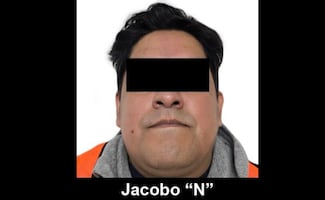Más Información

Vinculan a proceso a "El Yeicob", socio del empresario Raúl Rocha, por delincuencia organizada; le dictan prisión preventiva

Vinculan a proceso a "El Limones" por narcotráfico y posesión de armas; continúa en prisión en el Altiplano

UIF respalda sanciones de EU contra el Cártel de Santa Rosa de Lima; fortalece esfuerzos conjuntos para reducir criminalidad, destaca
Mexican Rafael González
showed that everything is possible in the field of Physics by achieving what nobody had been able to, not even Isaac Newton himself: solving the algorithm of the spherical aberration of a lens .
The Monterrey Institute of Technology and Higher Education ( ITESM ) informed through their website about the achievement of the young Mexican since it took centuries to solve this problem of optical physics and it will allow the reduction of costs in the elaboration of products such as telescopes and cameras .
González, a graduate of Industrial Physics Engineering and who is a Ph.D. student in nanotechnology, joined the work of Alejandro Chaparro , a graduate of the National Autonomous University of Mexico ( UNAM ), who had spent three years looking to solve the equation.
“I knew it was a mythical problem . I met Alejandro there; he insisted and invited me to solve the problem together. I told him that it was a swamp and that I wouldn’t be able,” said the young man to the institution.
Newton tried to solve the problem creating a telescope that solved the chromatic aberration , that is, to focus on the color in a single point, although it did not do the same with the spherical aberration. Scientists kept approaching the challenge, which was later called Wasserman-Wolf.
A solution for the problem was the use of aspheric lenses , that is, that were just spherical in a part of their surface. The problem was that the calibration depended on a not quite precise calculation, which the young men achieved to solve in a study titled “ General formula for a bi-aspheric singlet lens design free of spherical aberration ,” in Applied Optics .
Julio César Gutiérrez
, Rafael González’s adviser , said that the solution would allow the improvement of the development of lenses.
Noticias según tus intereses
[Publicidad]
[Publicidad]












